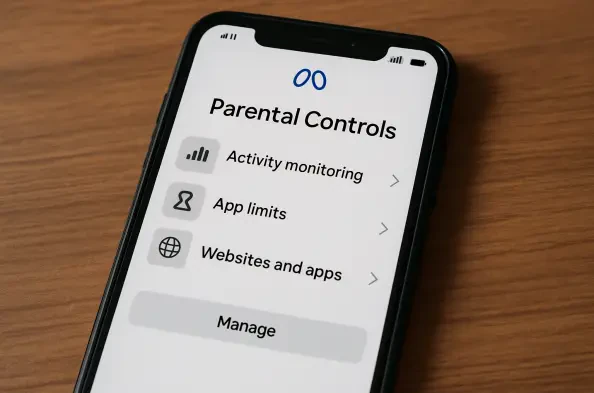Setting the Stage for Teen Safety in a Digital Age
In an era where social media platforms shape much of teenage interaction, a staggering statistic reveals that over 60% of teens encounter inappropriate content online, often through unchecked AI interactions. Meta, the powerhouse behind Instagram and Facebook, has rolled out new parental control features aimed at curbing these risks, particularly those posed by AI chatbots. This development emerges as a critical response to mounting concerns about teen safety, positioning Meta at the forefront of a broader industry shift toward enhanced digital protection for minors.
The urgency of this issue cannot be overstated, as regulators and parents alike demand accountability from tech giants. Meta’s latest tools promise to empower guardians with oversight over their teens’ interactions with AI characters on social platforms. This review delves into the specifics of these controls, assessing their functionality and potential impact on creating a safer online environment for young users.
In-Depth Analysis of Features and Performance
Disabling Private AI Chats
One of the cornerstone features of Meta’s parental controls is the ability to disable private chats between teens and AI characters. This functionality directly tackles the risk of inappropriate exchanges that have previously drawn criticism due to flirty or suggestive AI behavior. By allowing parents to turn off these interactions, Meta aims to create a protective barrier, ensuring that teens are less exposed to potentially harmful content.
The significance of this feature lies in its proactive approach to safety. Rather than relying solely on content moderation after the fact, disabling private chats prevents risky conversations from occurring in the first place. However, the effectiveness of this control depends on parental engagement and awareness, as well as Meta’s ability to seamlessly integrate this option into its platforms without disrupting user experience.
Blocking Specific AI Personas
Another key component is the option for parents to block specific AI personas deemed unsuitable for their teens. This granular control allows for tailored oversight, recognizing that not all AI characters pose the same level of risk. For instance, a persona with provocative dialogue can be restricted while others remain accessible, offering a customizable safety net.
This feature empowers parents to curate their teen’s digital interactions with precision. Yet, its practical impact hinges on how easily parents can identify and block problematic personas. If the process is cumbersome or if Meta fails to clearly label risky AI characters, the utility of this tool could be diminished, leaving gaps in protection.
Visibility into Chat Topics
Meta also provides parents with visibility into the broad topics their teens discuss with AI chatbots and the company’s AI assistant. This feature strikes a balance between monitoring and privacy by summarizing discussion themes without revealing exact messages. It aims to foster trust by keeping parents informed about potential red flags, such as conversations veering into sensitive areas.
The strength of this tool lies in its potential to encourage dialogue between parents and teens about online behavior. Nonetheless, maintaining this balance is tricky—too much intrusion could alienate teens, while insufficient detail might render the insights useless. Meta’s challenge is to refine this feature to ensure it serves as a meaningful safety mechanism without overstepping boundaries.
Industry Context and Comparative Performance
Alignment with Broader Safety Trends
Meta’s parental controls align with a wider industry push for teen safety on social platforms. The company has adopted guidelines akin to a PG-13 rating for AI experiences, aiming to filter out inappropriate content before it reaches young users. This mirrors efforts by other tech leaders, such as OpenAI, which recently introduced similar parental oversight for ChatGPT following public outcry over safety lapses.
This convergence of safety measures reflects growing regulatory and societal pressure on tech firms to prioritize user protection. Meta’s steps, while commendable, are part of a reactive trend rather than a pioneering move. The true test will be whether these controls can outpace evolving risks posed by AI advancements over the coming years.
Real-World Rollout and Initial Impact
Currently implemented in key markets like the U.S., U.K., Canada, and Australia, these controls are already shaping how teens interact with AI on Meta’s platforms. Early feedback suggests that tools like chat disabling can prevent harmful exchanges, such as a teen encountering suggestive dialogue from an AI character during casual browsing. Such real-world applications highlight the potential of these features to act as a first line of defense.
Beyond individual protection, the rollout influences parent-teen dynamics by fostering shared responsibility for online safety. Parents equipped with these tools may feel more confident in guiding their teens through digital spaces, though the long-term behavioral impact remains under observation. Meta’s ability to scale these features globally will be crucial to their overall success.
Challenges in Implementation and Effectiveness
Skepticism from Past Performance
Despite the promise of Meta’s new tools, skepticism persists due to historical shortcomings in the company’s safety features. Reports have previously criticized Instagram for ineffective protections, raising doubts about whether these latest controls will deliver on their intent. Past failures in content moderation suggest that implementation flaws could undermine even the best-designed features.
This history casts a shadow over Meta’s current efforts, with critics questioning if the company has the infrastructure to enforce these controls rigorously. Addressing these concerns will require transparent reporting on the tools’ performance and swift action to fix any identified weaknesses.
Regulatory and Technical Hurdles
Regulatory scrutiny adds another layer of complexity, as authorities continue to push for stronger safeguards for minors. Meta faces the challenge of meeting diverse legal standards across regions while ensuring its AI filtering mechanisms are robust enough to catch loopholes. Technical limitations in detecting nuanced inappropriate content could also hinder the effectiveness of these controls.
Moreover, the rapid evolution of AI technology means that risks may outstrip current safety measures if not updated regularly. Meta must navigate these hurdles with agility, balancing compliance with innovation to maintain user trust and regulatory approval.
Reflecting on the Verdict and Path Forward
Looking back, Meta’s parental controls represent a significant step toward enhancing teen safety in an increasingly complex digital landscape. The features, from disabling private AI chats to providing topic visibility, demonstrate a clear intent to address the risks of inappropriate AI interactions. However, lingering doubts about past safety failures and ongoing implementation challenges temper the optimism surrounding their initial impact.
Moving forward, Meta must prioritize rigorous testing and updates to ensure these tools remain effective against emerging threats. Collaboration with regulators and independent auditors could help refine the controls, closing gaps in enforcement. For parents and teens, embracing open communication alongside these digital safeguards will be key to navigating online risks.
Ultimately, the tech industry as a whole should take note of Meta’s journey, learning from both its advancements and setbacks. Investing in scalable, adaptive safety protocols over the next few years, from now through 2027, will be essential to protect vulnerable users. Meta’s efforts, while imperfect, lay a foundation that could inspire broader change if paired with sustained commitment to user protection.






